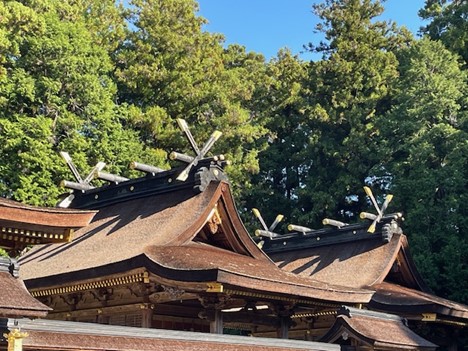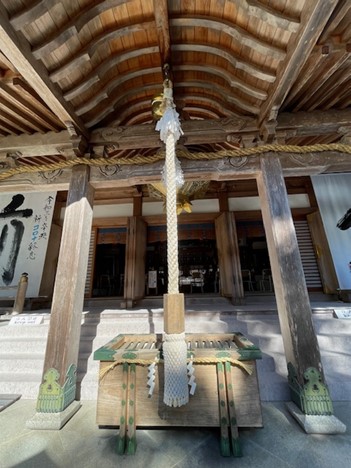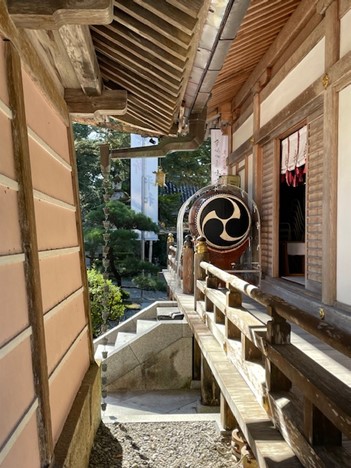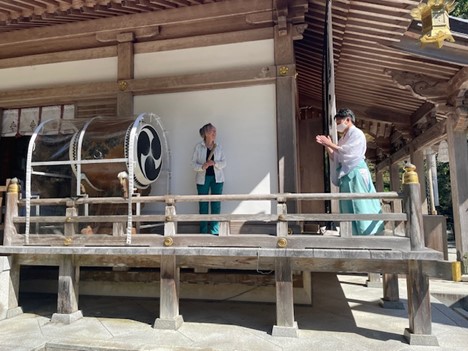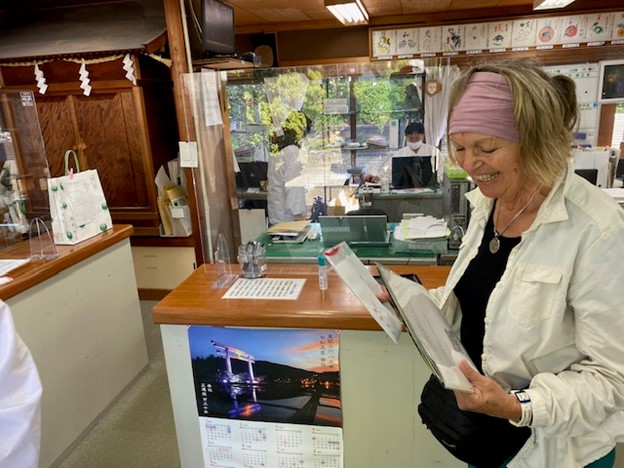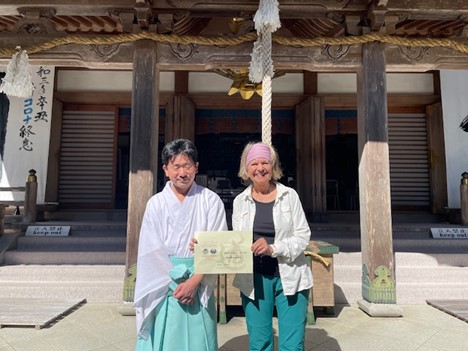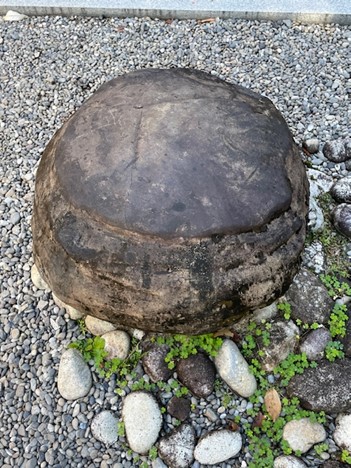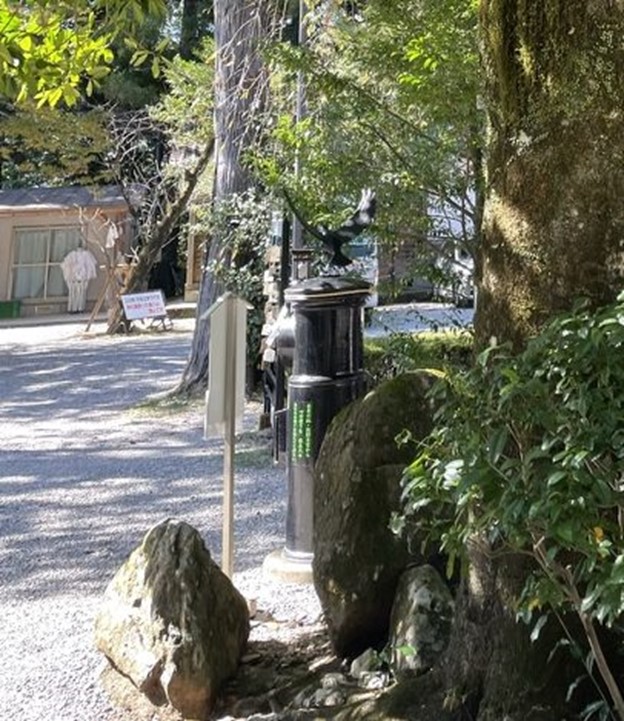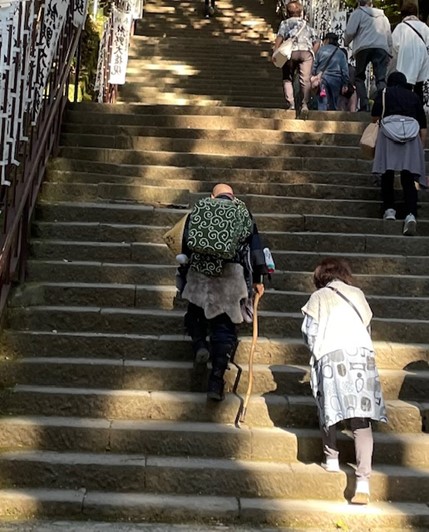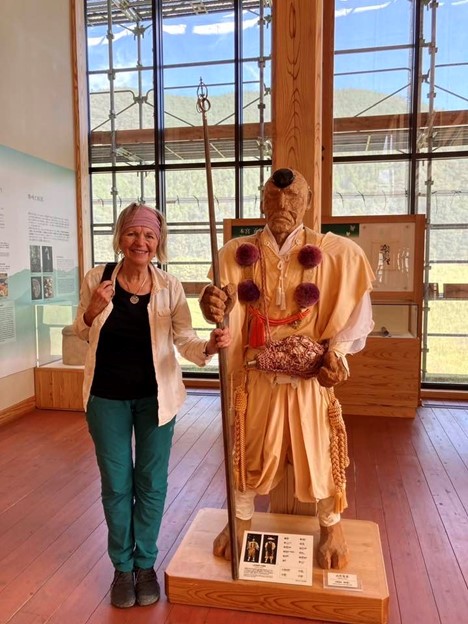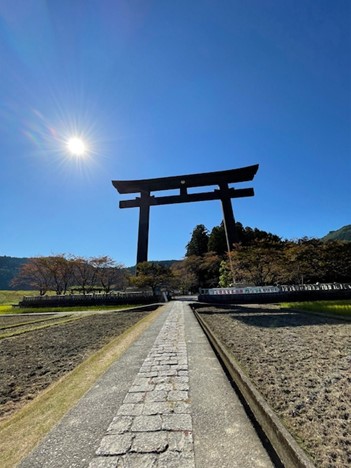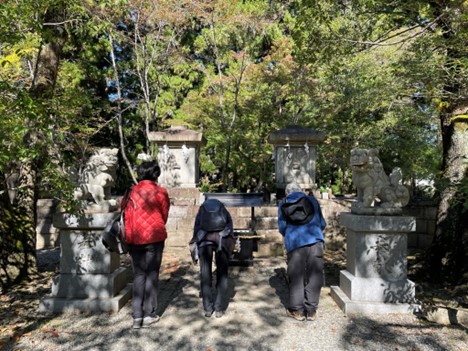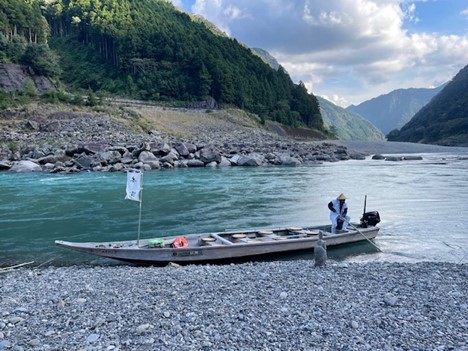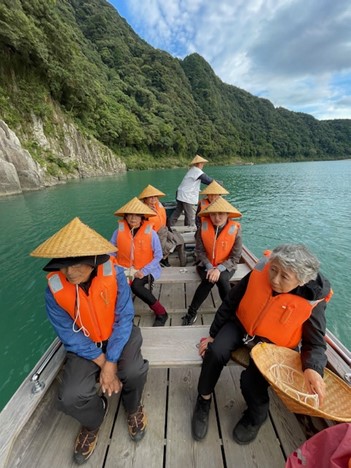Kumano Hongu Taisha
When approaching the Grand shrine in the evening, I felt a change of energy – as if I could breathe freer. There was a lightness in the air I could not really explain. I immediately loved Hongu Taisha. The wooden structure of the buildings with roofs thatched with cypress shingles perfectly blended into the surrounding nature. This was a place of nature worship.
.
.
.
.
.
.
The dragon water fountain for purification to the right. To the left you see the lion-dog (komainu), guardian against evil to the deity.
.
.
.
,
,
The main gate is called Shinmon. Above the gate is a powerful shimenawa attached. It is a rope made out of rice straw and signifies a sacred area. Further up you see an image of a rabbit, the zodiac sign of the year 2023. The patterns on the white curtain depict Chrysanthemum flowers, an Imperial symbol indicating the importance of the shrine.
.
.
..
.
.
We stepped through the gate into a large, empty space with four main buildings at the end – the Honden (Main Hall). Four deities reside in these four buildings connected by a wooden fence – the tow most important are the sun goddess Amatersasu and her brother Susanoo-no Mikoto (god of the sea and the wind).
.
.
.
.
.
I love the roof structure of the shrines. The two crossed beams with the golden metal ends are called Chigi and give the building a magical appearance.
.
.
.
.
.
The contrast of the unfinished, raw wood of the buildings and the golden lanterns shining in the sun is beautiful.
.
.
.
.
.
When you approach a shrine, you first pull the rope to announce your presence, then donate some money into the box, bow two times, clap with your hands two times, say a prayer and bow again one time before leaving. This is a way to connect with the deities.
.
.
.
.
.
The hall to the right is called Haiden (Prayer Hall). It is where the priests perform rituals. I listened to their beautiful chanting and drumming while standing outside of the hall the next morning . I was fascinated by the huge drum located outside, decorated with energetic comma-like swirls, perhaps symbolizing a whirlpool of water. It is a very ancient symbol and can be seen in nearly every shrine.
.
.
.
.
/
I was not aware that I could play this powerful Taiko drum as a reward of having done both pilgrimages – the Kumano Kodo and the Camino de Santiago. Every pilgrim who had walked both and can show the stamps is eligible to receive a dual pilgrim certificate. At the end of my drumming, the priest clapped at my performance. It helped that I learned Taiko drumming in Phoenix from Ken Koshio.
.
.
.
.
Receiving the certificate for a dual pilgrim with great joy
.
.
.
.
Shinto priest Saigi and I
.
.
.
.
.
A mirror like stone ball with the three legged crow, the Yatagurasu, the sacred bird. Behind the ball you can see a calligraphy painted by the chief priest. At the end of every year, he writes one character to express his heartfelt wishes for the coming year.
.
.
.
.
.
Near the Haiden, I saw two perfectly ball-shaped natural rocks with smooth surfaces (one of them is pictured above). They have also big meanings which, unfortunately, I have forgotten.
.
.
.
.
.
There is another object I was fascinated by. Behind the two rocks and the Tarajo Holly tree known also as the “postcard tree”, there is a metal tube with the three-legged crow on the top. This is a mailbox. The current head priest is concerned about the dominance of the digital world and encourages the visitors to slow down and write a postcard stating their feelings about the visit to the Grand Shrine.
.
.
.
.
.
When we left, a monk with a straw hat, animal skin and walking stick climbed the 158 stairs to the Grand Shrine. I was told that this was a Yamabushi practitioner, a mountain ascetic following intense discipline, belonging to the Shugendo religion. Normally, they are dressed in white – so I was not so sure what to believe.
.
..
.
.
Later on, we visited a museum with a wood carving of a Yamabushi mountain warrior. He carries a conch shell. In former times it was used to communicate with each other in the mountains. The training of a Yamabushi is intended to bring death to the worldly self in order to be reborn in another world. Once there even existed a practice of self-mummification in order to become a Sokushinbutsu, a Living Buddha. This practice was forbidden about 100 years ago.
.
.
.
.
.
This 34m high Torii made out of concrete is the tallest gate in Japan and marks the entrance to the sacred area of Oyunahara. For over 1000 years, it was here were the pilgrims worshiped the deities. A devastating flood destroyed the huge complex and the shrine was rebuilt at the beginning of the 20th century.
.
.
.
.
.
Originally, 12 deities were enshrined in Oyunohara. Only four deities were moved to the new location, Hongu Taisha. The other eight deities are still enshrined in two stone monuments in Oyunohara. In the photo above, you see one of the stone monuments with the two lion-dogs as guardians left and right on pedestals. I find it fascinating that a rock is believed to enshrine a deity. For 2000 years, nature worship was practiced at this place and still continues today.
In order to reach the Kumano Hayatama Taisha, we took a boat down the Kumano-gawa river.
.
.
.
.
Thousand years ago, this kind of boat was used by the Imperial family, nobility and rich people to travel from Hongu Taisha to the Hayatama Taisha Grand Shrine. Common pilgrims had to walk along the riverbank. We started our river boat tour farther down the river and travelled the last 16 km to the shrine. The tour lasted 90 minutes and every minute was worth it.
.
.
.
.
.
Quietly, the boat was floating down the crystal clear river. Cascading waterfalls were tumbling down the green, steep mountains and interesting rock formations captured our attention, Our tour guide told us the stories connected with all these natural wonders and played beautiful music on the Shinobue flute (bamboo flute).
.
.
.
.
Our tour guide and me in front of interestingly shaped rocks
.
.
.




